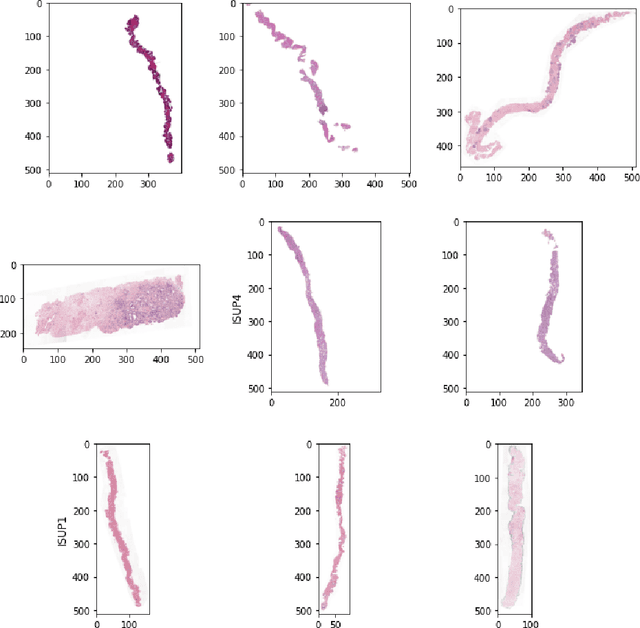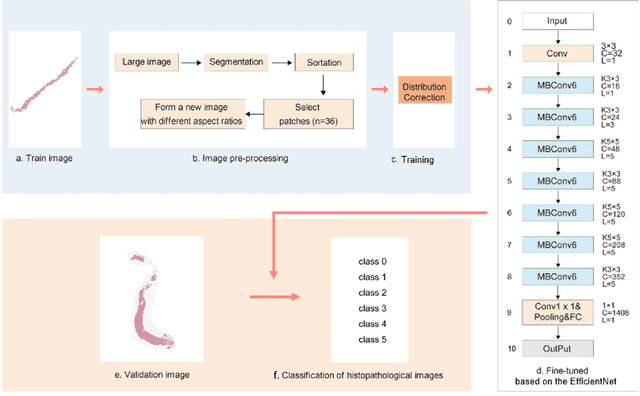Haotian Xie
Automated Prostate Cancer Diagnosis Based on Gleason Grading Using Convolutional Neural Network
Nov 29, 2020



Abstract:The Gleason grading system using histological images is the most powerful diagnostic and prognostic predictor of prostate cancer. The current standard inspection is evaluating Gleason H&E-stained histopathology images by pathologists. However, it is complicated, time-consuming, and subject to observers. Deep learning (DL) based-methods that automatically learn image features and achieve higher generalization ability have attracted significant attention. However, challenges remain especially using DL to train the whole slide image (WSI), a predominant clinical source in the current diagnostic setting, containing billions of pixels, morphological heterogeneity, and artifacts. Hence, we proposed a convolutional neural network (CNN)-based automatic classification method for accurate grading of PCa using whole slide histopathology images. In this paper, a data augmentation method named Patch-Based Image Reconstruction (PBIR) was proposed to reduce the high resolution and increase the diversity of WSIs. In addition, a distribution correction (DC) module was developed to enhance the adaption of pretrained model to the target dataset by adjusting the data distribution. Besides, a Quadratic Weighted Mean Square Error (QWMSE) function was presented to reduce the misdiagnosis caused by equal Euclidean distances. Our experiments indicated the combination of PBIR, DC, and QWMSE function was necessary for achieving superior expert-level performance, leading to the best results (0.8885 quadratic-weighted kappa coefficient).
Boosted EfficientNet: Detection of Lymph Node Metastases in Breast Cancer Using Convolutional Neural Network
Oct 10, 2020



Abstract:In recent years, advances in the development of whole-slide images have laid a foundation for the utilization of digital images in pathology. With the assistance of computer images analysis that automatically identifies tissue or cell types, they have greatly improved the histopathologic interpretation and diagnosis accuracy. In this paper, the Convolutional Neutral Network (CNN) has been adapted to predict and classify lymph node metastasis in breast cancer. Unlike traditional image cropping methods that are only suitable for large resolution images, we propose a novel data augmentation method named Random Center Cropping (RCC) to facilitate small resolution images. RCC enriches the datasets while retaining the image resolution and the center area of images. In addition, we reduce the downsampling scale of the network to further facilitate small resolution images better. Moreover, Attention and Feature Fusion (FF) mechanisms are employed to improve the semantic information of images. Experiments demonstrate that our methods boost performances of basic CNN architectures. And the best-performed method achieves an accuracy of 97.96% and an AUC of 99.68% on RPCam datasets, respectively.
 Add to Chrome
Add to Chrome Add to Firefox
Add to Firefox Add to Edge
Add to Edge